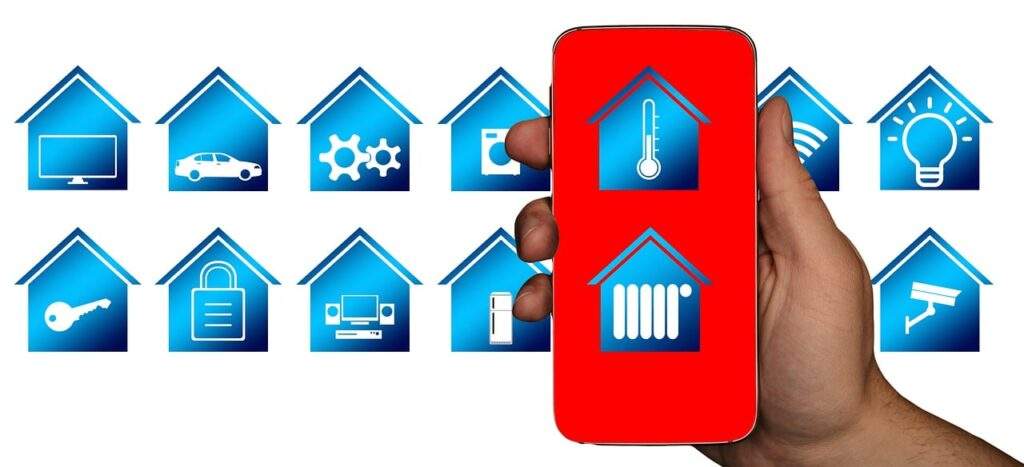Home automation has emerged as an effective solution for minimizing energy consumption in households. By integrating advanced technology, home automation allows precise control and automation of various devices such as lights, thermostats, and appliances. This ensures that only the necessary amount of energy is used, preventing waste and optimizing consumption.
A well-configured home automation system monitors energy usage in real-time, helping you identify areas for improvement in energy efficiency. Additionally, some systems can automatically adjust energy consumption based on your habits, optimizing your home without manual intervention. This not only increases efficiency but also provides complete control over your smart home environment.
Home Automation Devices That Reduce Energy Consumption
To maximize savings at home, it’s crucial to choose the right home automation devices. Below are some of the most effective ones for reducing energy consumption and improving efficiency in your home.
- Smart Thermostats: Smart thermostats are essential for reducing energy consumption in home heating and cooling. Devices like the Nest Thermostat and Ecobee automatically adjust to your routines, lowering the temperature when you’re not home. These thermostats can be controlled from your smartphone, allowing you to manage the temperature anytime and ensure that energy is not wasted.
- Smart Plugs: Smart plugs are another effective way to control energy usage at home. They allow you to schedule the on and off times of appliances, eliminating standby power consumption. Additionally, these plugs enable you to remotely disconnect any connected devices, preventing unnecessary energy use when you’re away from home. Brands like TP-Link Kasa and Wemo offer easy-to-set-up smart plugs.
- Smart Lighting: Smart lighting is key to reducing energy consumption as well. Smart bulbs like Philips Hue and LIFX let you control lighting from anywhere, set schedules, and adjust light intensity based on the time of day. These LED bulbs are more energy-efficient than traditional bulbs, reducing energy consumption. Moreover, integration with voice assistants like Amazon Alexa or Google Assistant makes control and optimization even easier.
- Energy Management Systems: Energy management systems monitor and optimize energy consumption throughout the home. Devices like Sense and Neurio connect to your home’s electrical panel, providing a detailed breakdown of each appliance’s energy use. With this information, you can identify high-energy-consuming devices and adjust their usage to improve efficiency. Some systems even offer automatic recommendations for optimizing energy use.
Configuring Routines and Automations to Maximize Energy Savings
One of the standout benefits of home automation is the ability to set routines and automations that optimize energy use. These configurations allow multiple devices to work together to reduce energy consumption without constant intervention. Here’s how to set up some of the most effective automations for cutting down on your electricity bills.
- Wake-Up Routine: A wake-up routine can help you start your day efficiently while saving energy. For example, by setting up a routine with your voice assistant, like Amazon Alexa or Google Assistant, you can have lights gradually turn on, the thermostat adjust to a comfortable temperature, and appliances automatically turn off as you leave the room. This not only enhances comfort but also ensures that energy is used efficiently.
- Away Mode Automation: Away mode is another powerful automation that can significantly reduce energy consumption when you’re not home. Activating this mode causes devices like lights, thermostats, and smart plugs to turn off or adjust to energy-saving settings. For instance, the thermostat can lower heating or cooling to a minimum, while lights and appliances turn off completely. This automation can be triggered when you leave home or even based on your smartphone’s location.
- Automatic Lighting Control: Another way to maximize energy savings is to configure smart lighting to turn on and off automatically based on natural light conditions or room occupancy. For example, you can use motion sensors to turn on lights only when someone enters a room and turn them off when no motion is detected for a set period. This is particularly useful in areas of the house that are not constantly in use, such as hallways, bathrooms, and garages. You can also schedule lights to adjust automatically at sunset, reducing artificial lighting when there is enough natural light.
Case Study: Applying Home Automation in Different Areas of the Home for Energy Savings
Applying home automation technologies to optimize energy consumption is particularly effective when implemented in various areas of the home. Below are examples of how you can reduce energy consumption using automation in different parts of your house.
- Kitchen: The kitchen is one of the highest energy-consuming areas, making it ideal for implementing automation solutions. By installing smart plugs on kitchen appliances like the microwave, coffee maker, or toaster, you can ensure these devices only use energy when needed. Additionally, you can program smart lighting to automatically turn off when no motion is detected in the kitchen, reducing energy waste.
- Living Room: The living room is another area where automation can make a significant difference in energy consumption. For example, you can use a smart thermostat to adjust the room’s temperature based on the time of day or room occupancy. Additionally, by integrating smart lighting systems, you can create lighting scenes tailored to different activities, such as watching TV or reading, optimizing light usage according to needs. This not only improves energy efficiency but also creates a more comfortable and welcoming environment.
- Bedroom: In the bedroom, automation can help create a more relaxing and energy-efficient environment. You can program smart lighting to gradually dim as you prepare for sleep, reducing energy consumption and promoting better rest. Additionally, you can configure the smart thermostat to lower the temperature at night, saving energy while you sleep. Smart plugs can also ensure no devices are left in standby mode consuming energy overnight.
- Bathroom: The bathroom is another area where automation can aid in energy savings. By installing motion sensors to control lights and ventilation, you can ensure these devices only operate when the bathroom is in use. You can also use smart plugs to control floor heating, ensuring it’s only on when necessary. This not only reduces energy consumption but also improves resource efficiency in the home.


